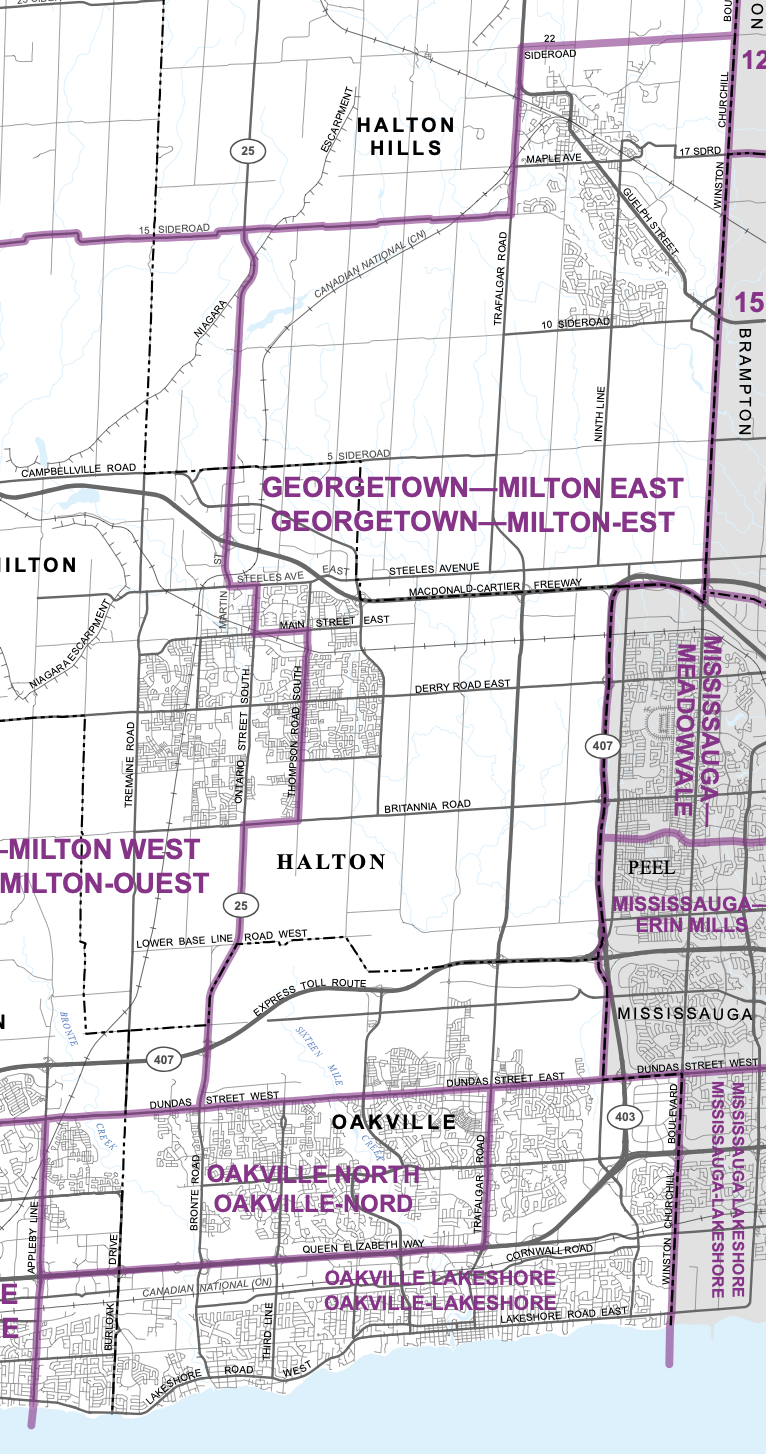
Town council is protesting a plan that would see North Oakville voters lumped in with Georgetown and Milton under redrawn federal electoral boundaries.
Based on the latest census data, a federal commission is working to create a new electoral map to rebalance the population within federal and provincial ridings. The independent Federal Electoral Districts Redistribution Commission is comprised of a judge appointed by Ontario's chief justice, as well as two members appointed by the Speaker of the House of Commons.
The proposed plan for the town would divide Oakville voters into three ridings:
- An Oakville-Lakeshore riding that would include east Burlington voters
- An Oakville North riding that would include east Burlington voters
- A Georgetown-Milton East riding would include Oakville voters living north of Dundas Street.

At its Sept. 20 meeting, town council registered its opposition to the plan.
The proposed changes would "put Oakville's newest area at a disadvantage for funding and support by being separated from the rest of Oakville," says a motion approved by council.
It adds that Ward 6 and 7 residents would find it difficult to connect with their MP and have their community concerns addressed in a Georgetown-Milton East riding.
Instead, councillors suggest the commission divide the town into Oakville East and Oakville West ridings.
"An east-west pair of ridings would be a more efficient and equitable electoral grouping of Oakville's population," says a letter to the boundary commission written by Mayor Rob Burton.
"Our 2021 population already equals enough residents to justify two ridings, by your own rules."
Oakville's current population is about 225,000, with considerable growth expected in coming years. Federal ridings are intended to encompass nearly 116,500 voters each, with the possibility of up to a 25 per cent variance.
Burton added that keeping all of Oakville's voters together would also help respect the unique identities of Halton's four municipalities.
"All three Commission-proposed ridings would include minority populations from Burlington or Oakville. The provincial and federal elected officials of these proposed districts would be left to liaise among a multitude of municipal councils. Inevitably, any given group would have its voice reduced."
Federal electoral boundaries are reviewed every ten years to ensure up-to-date representation. A new map is intended to be completed by spring 2024.
Public consultation on the proposed boundaries is open until Oct. 29. Comments can be emailed to the commission.